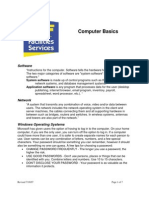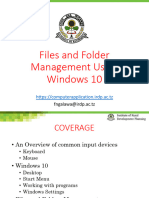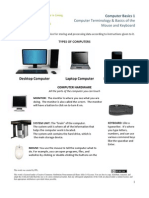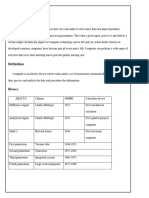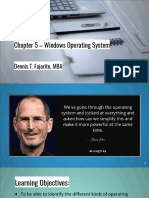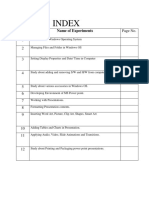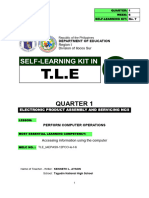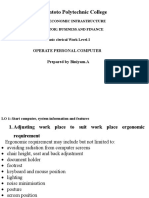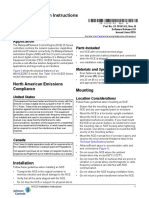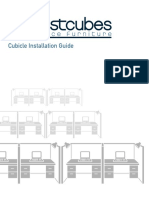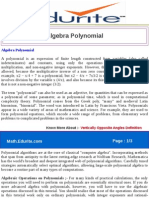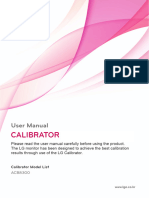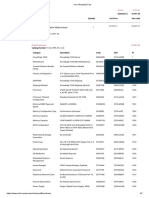0% found this document useful (0 votes)
8 views5 pagesFundamentals of Computer
The document provides an overview of computers, defining them as electronic devices that process data and detailing their main components, including input devices like keyboards and mice, output devices like monitors and printers, and storage types such as RAM and hard disks. It also covers the Microsoft Windows operating system, its interface, basic file and folder operations, personalization options, and methods for searching and accessing common applications. Additionally, it includes instructions for saving and opening files, making it a comprehensive guide to computer fundamentals and Windows usage.
Uploaded by
sah9149Copyright
© © All Rights Reserved
We take content rights seriously. If you suspect this is your content, claim it here.
Available Formats
Download as PDF, TXT or read online on Scribd
0% found this document useful (0 votes)
8 views5 pagesFundamentals of Computer
The document provides an overview of computers, defining them as electronic devices that process data and detailing their main components, including input devices like keyboards and mice, output devices like monitors and printers, and storage types such as RAM and hard disks. It also covers the Microsoft Windows operating system, its interface, basic file and folder operations, personalization options, and methods for searching and accessing common applications. Additionally, it includes instructions for saving and opening files, making it a comprehensive guide to computer fundamentals and Windows usage.
Uploaded by
sah9149Copyright
© © All Rights Reserved
We take content rights seriously. If you suspect this is your content, claim it here.
Available Formats
Download as PDF, TXT or read online on Scribd
/ 5












